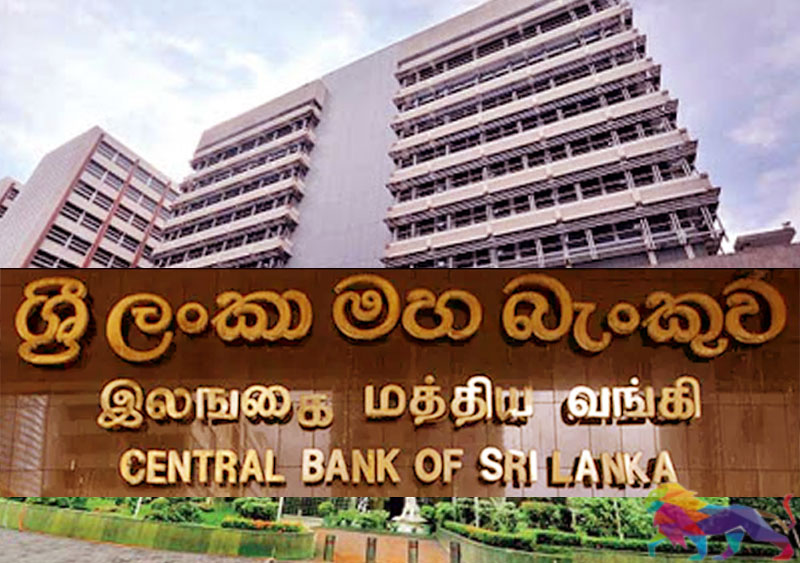Sri Lanka’s central bank has ordered a 5.0 percent ceiling on foreign currency deposits in a bid to reduce a gap between rupee yields and dollar yields, an order under the country’s banking law shows.
Sri Lanka last week raised the policy rate at which overnight money is printed to 6.0 percent from 5.50 percent and also a 12-month de facto rate through which large volumes of money is printed to keep gilt yields down by 55 basis points to 5.93 percent, which is still below the overnight rate.
Dollar yields had moved up to around 7 percent.
“The maximum interest rates that may be offered or paid by a licensed commercial bank and the National Savings Bank on all foreign currency deposits shall not exceed an Annual effective Rate of up to 5 percent,” the order said.
In the case of special deposit accounts, introduced recently, a higher rate could be paid.
Low rupee rates and expectations of a devaluation had led exporters and others to hold on to dollars an and borrow rupees.
Borrowing rupees to hold dollars should in normal circumstances led to a reduction in credit for other activities and therefore imports, squeezing the current account, but with the central bank printing new money, the correction does not happen.
Sri Lanka is also planning to borrow dollars abroad through various credit lines, pushing up long term indebtedness and widening the short term current account deficit further.
Domestic dollar yields began to rise rupee yields from late 2020 as money printing (stimulus) and an inconsistent flexible exchange rate (now you give convertibility to the note issue, now you don’t) and a widening budget deficit triggered three rate cuts in less than a year.
The downgrade pushed up bonds on sovereign bond yields and also led to a trimming of limits on cross-border lending by counterparty banks, creating a severe dollar liquidity crunch in domestic credit markets.
State run banks were also funding a massive dollar position in state-run Bank of Ceylon, built up in years when money printing (call money rate targeting, output gap targeting and MMT), created forex shortages.
Banks also had to repay loans taken to buy domestic law dollar bonds (Sri Lanka Development Bonds) where yield also went up.
Sri Lanka’s monetary policy had deteriorated sharply over the last five years, with unusually discretionary policy involving a ‘flexible’ exchange rate (discretionary external anchor) and ‘flexible’ inflation targeting (discretionary domestic anchor) worsening years of monetary anchor conflicts.
The central bank instead of shifting to a consistent policy framework started to control bond auctions through so-called ‘Stage III’ method, and also imposed lending rate controls and deposits rates controlled.
Razeen Sally, a classical economist had warned Sri Lanka against a steady shift away from markets and back to a controlled or centrally planned economy.
“Underlying all this is a misguided world view,” Sally said delivering a lecture marking 69 years of Sri Lanka’s central bank in 2019, after two currency crises in rapid succession triggered import controls.
“It is a world view Lord (John Maynard) Keynes and his Bloomsbury circle had shared. And (Friedrich) Hayek accused Keynes and his ilk of suffering from a fatal conceit, for that very reason,”
“Why is the world view misguided?
“It is as if you could get a committee of really good super qualified, intelligent people, together. Who are platonic guardians as it were, who only have the public interest in mind. They are the best committee to sort out the complex problems of the world because they know best.
“They also assume they have the requisite knowledge to intervene here, there and everywhere as superior to the market, in particular situations.”
“Let me choose a generic example. And this happens around the world, sometimes also here in Sri Lanka.
“The generic example is, say, the monetary board of a central bank that actually tells market actors beginning with commercial banks what interest rates they should charge, to whom they should lend and under what conditions.
“And when these market actors don’t behave accordingly, they are ticked off like naughty school children and sometimes threatened with punitive action.”
“In a market economy that is not appropriate and I think it is a fundamental mis-understanding of what a market economy is about.
“Not least because it assumes that a certain committee of good men, have better interests and knowledge,” he said.


